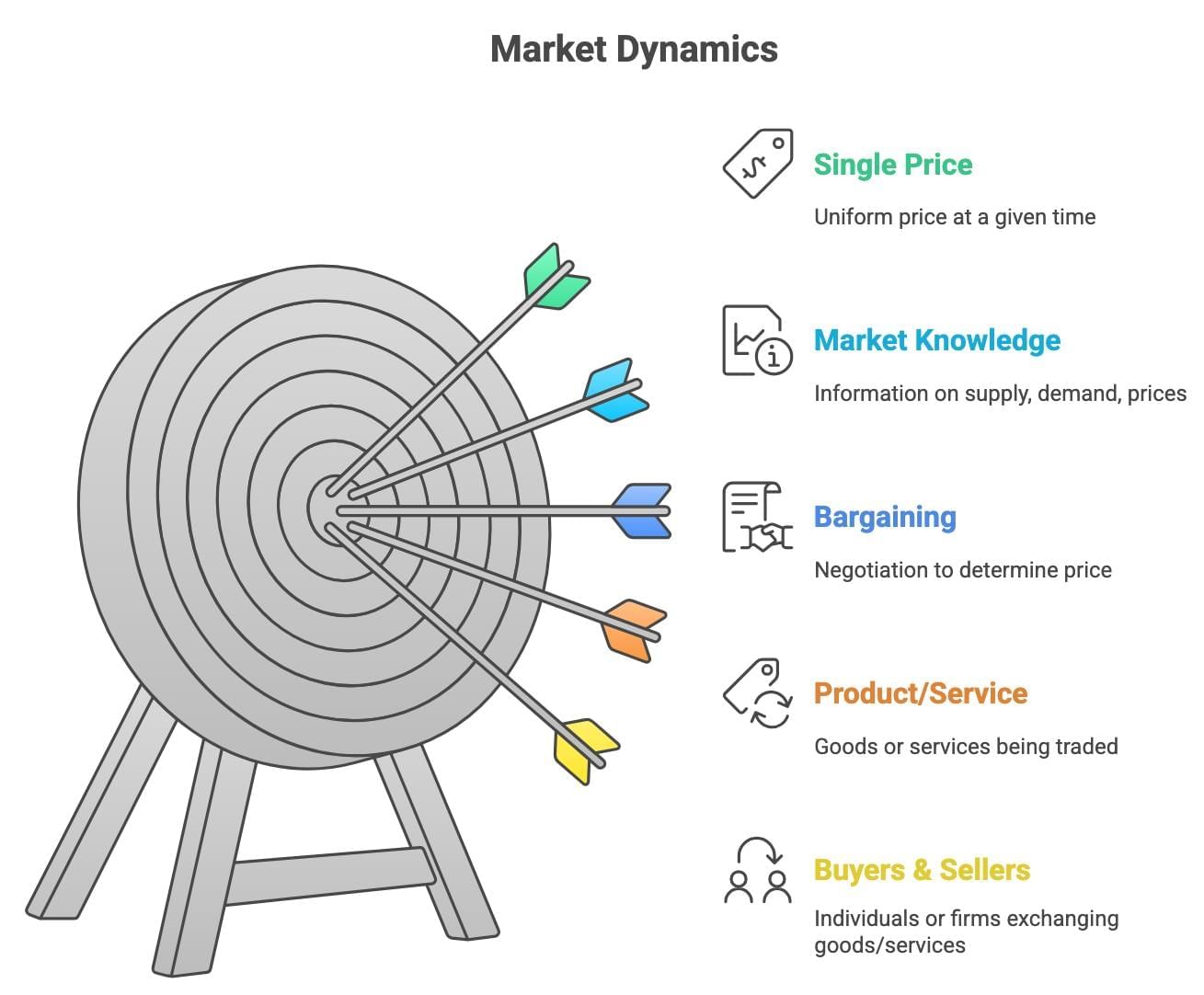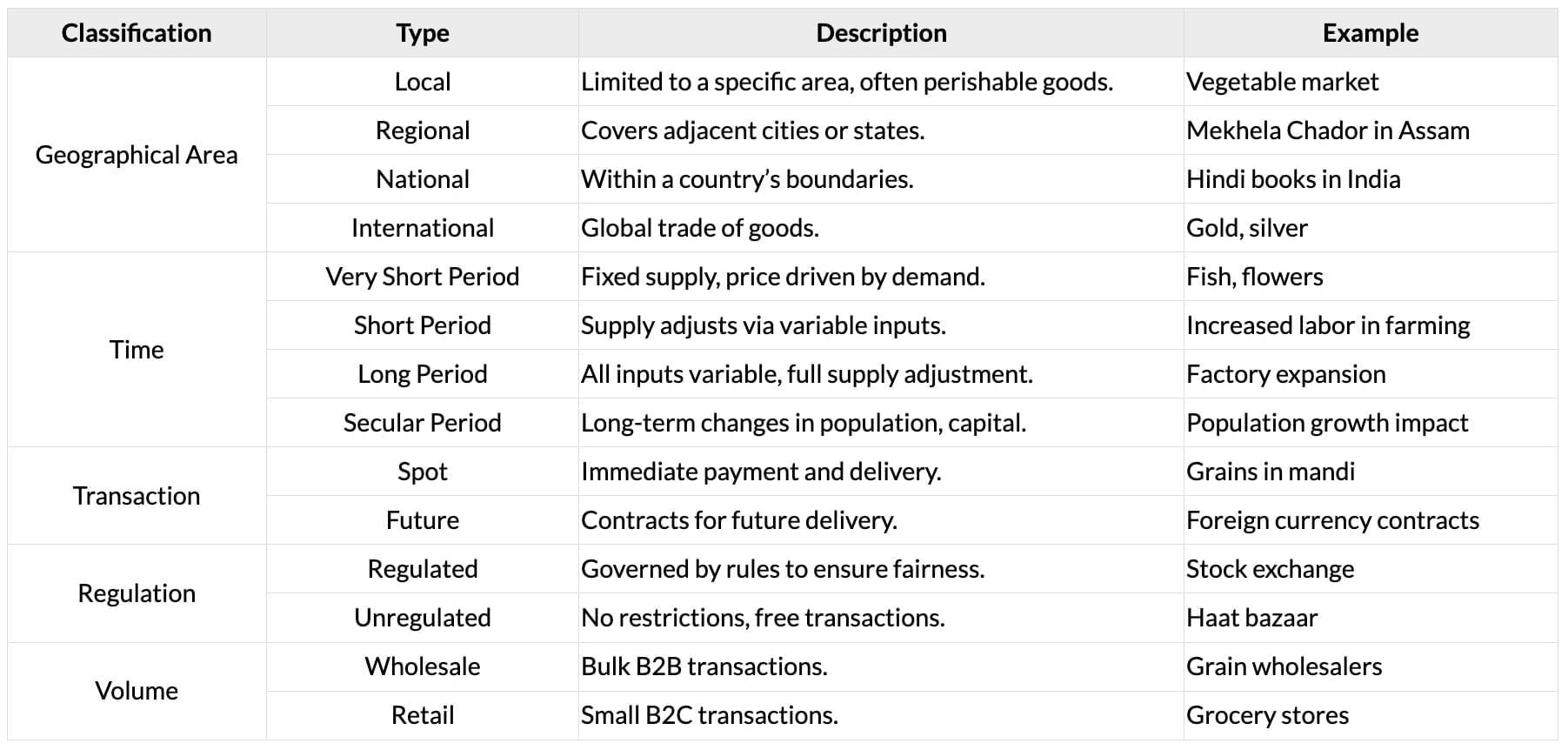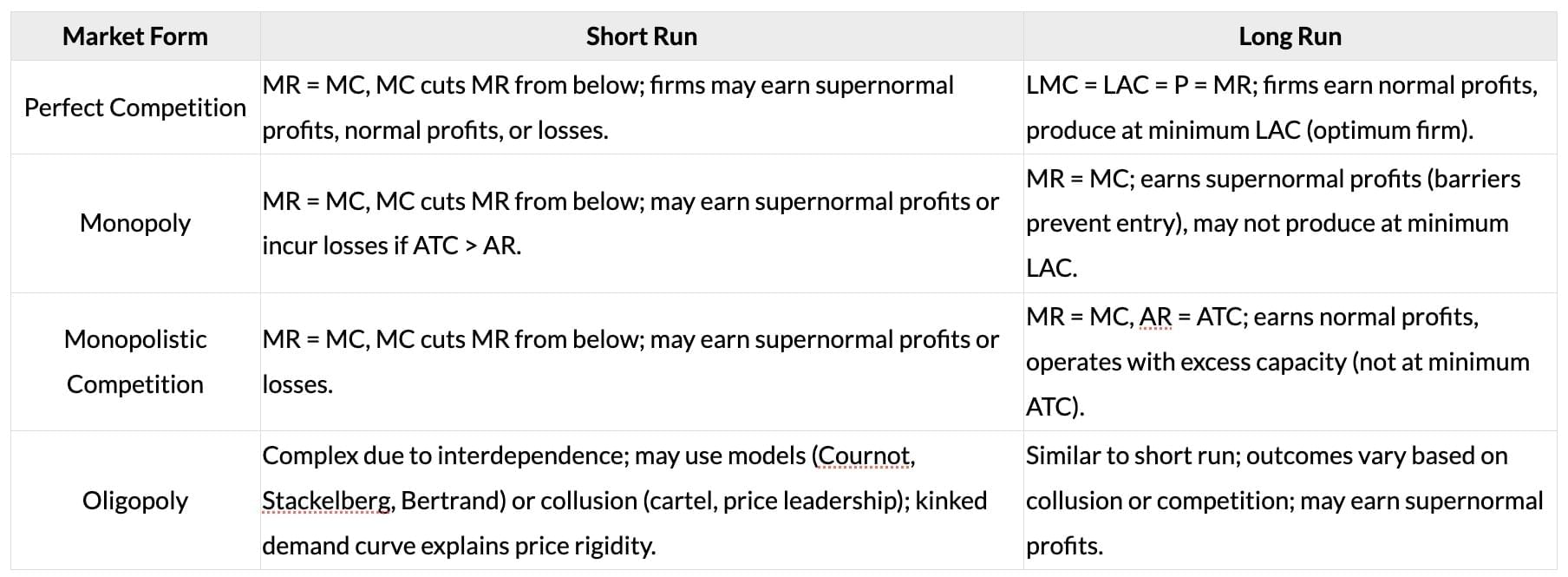CA Foundation Exam > CA Foundation Notes > Business Economics for CA Foundation > Cheatsheet: Price Determination in Different Markets
Cheatsheet: Price Determination in Different Markets | Business Economics for CA Foundation PDF Download
Meaning of Market
A market is a collection of buyers and sellers interacting to trade goods or services, determining prices.


Classification of Markets

Types of Market Structures

Revenue Concepts

Behavioral Principles

Price Determination Overview
Prices reflect the exchange value of goods and services. In a free market, prices are determined by the interaction of demand and supply without external intervention. The government may intervene to set prices for critical goods (e.g., petrol, wheat) to protect producers and consumers.

Effects of Changes in Demand and Supply

Simultaneous Changes in Demand and Supply

Characteristics of Market Forms

Equilibrium Price and Output Determination

Long-Run Outcomes for Firms

Welfare Implications

The document Cheatsheet: Price Determination in Different Markets | Business Economics for CA Foundation is a part of the CA Foundation Course Business Economics for CA Foundation.
All you need of CA Foundation at this link: CA Foundation
|
86 videos|255 docs|58 tests
|
FAQs on Cheatsheet: Price Determination in Different Markets - Business Economics for CA Foundation
| 1. What is the definition of a market in economic terms? |  |
Ans. A market in economic terms refers to a structure that allows buyers and sellers to exchange goods, services, or information. It can be a physical location, like a marketplace, or a virtual space, such as an online platform. The market facilitates trade by providing a framework for pricing and availability of products.
| 2. How are markets classified in economics? |  |
Ans. Markets can be classified based on various criteria including the nature of the commodity (goods or services), the degree of competition (perfect competition, monopolistic competition, oligopoly, monopoly), and the geographical area (local, national, or international markets). Each classification helps in understanding market dynamics better.
| 3. What are the main types of market structures? |  |
Ans. The main types of market structures include:
1. Perfect Competition: Many firms, identical products, free entry and exit.
2. Monopolistic Competition: Many firms, differentiated products, some control over pricing.
3. Oligopoly: Few firms, products may be identical or differentiated, significant barriers to entry.
4. Monopoly: One firm, unique product, high barriers to entry, and considerable pricing power.
| 4. What are the key concepts of revenue in a market? |  |
Ans. Key concepts of revenue include:
1. Total Revenue (TR): The total income from sales of goods or services.
2. Average Revenue (AR): Revenue earned per unit sold, calculated as TR divided by the quantity sold.
3. Marginal Revenue (MR): The additional revenue generated from selling one more unit of a good or service. Understanding these concepts helps businesses make pricing and production decisions.
| 5. How is equilibrium price determined in a market? |  |
Ans. Equilibrium price is determined at the point where the quantity demanded by consumers equals the quantity supplied by producers. This intersection of demand and supply curves indicates the price at which the market clears, meaning there is no excess supply or demand. Changes in factors such as consumer preferences, production costs, or external economic conditions can shift these curves, affecting the equilibrium price.
Related Searches
















